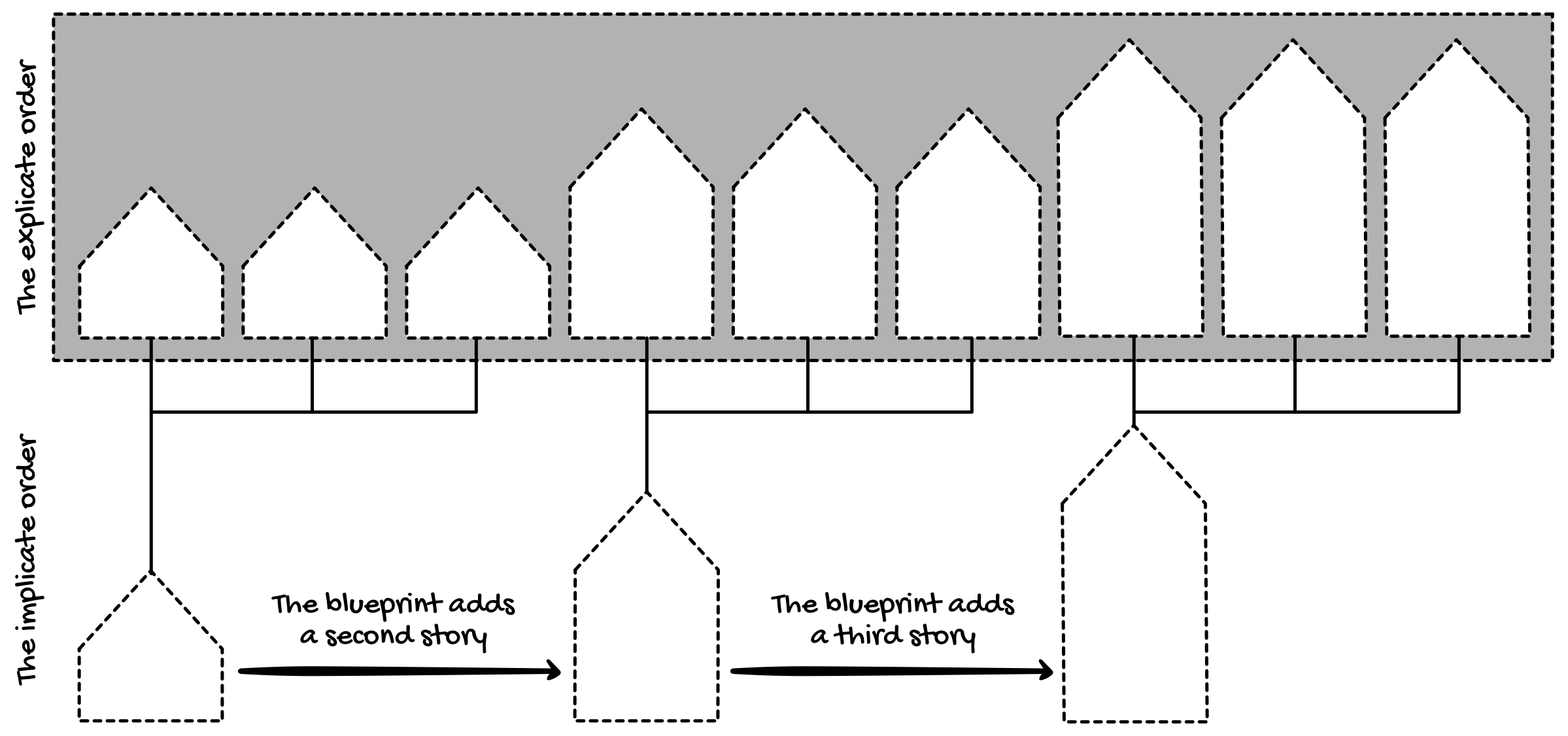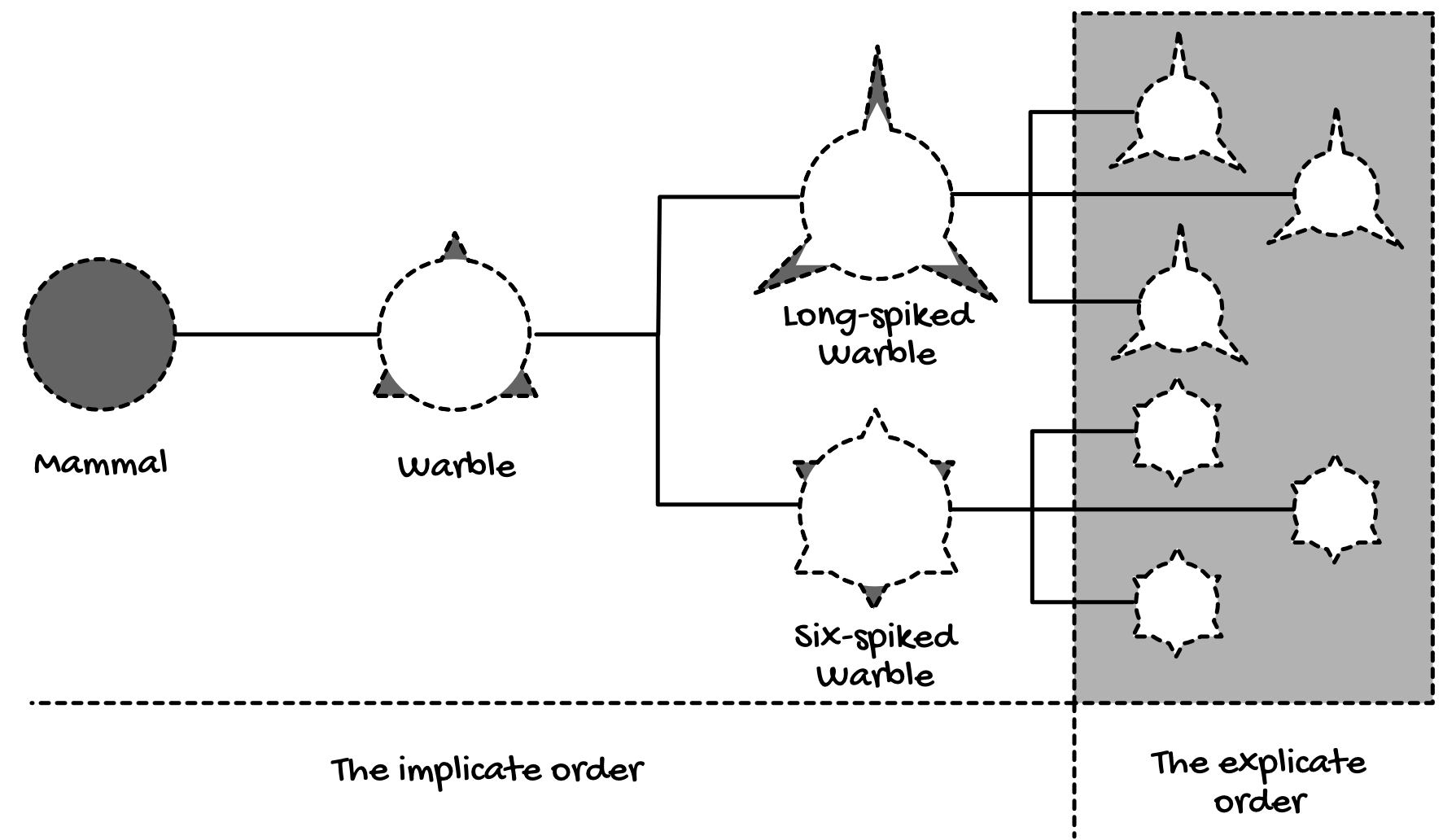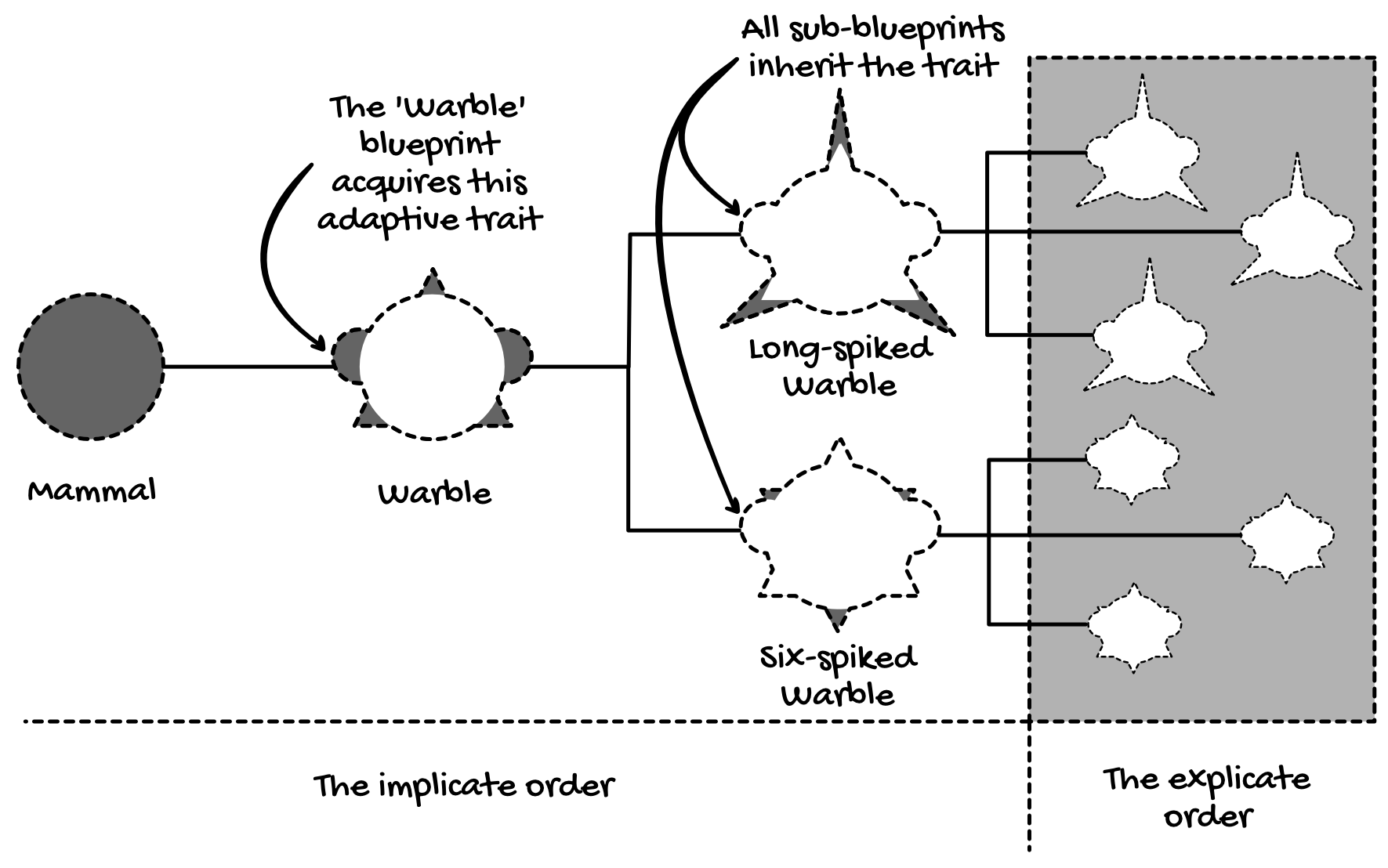"Right, well, going back to this topic of fear," Zac said. "I have a question. You've explained that fear is an illusion, but isn't fear a genuinely useful thing? I should fear that poisonous snake on the ground and walk away from it, so I don't die. Right?"
"Okay, I have two things to say about that. Firstly, you can't actually cease to exist. When you die, you just leave the illusion of this relative world. If you truly knew that, you wouldn't fear death. Death is an illusion, but it takes a lot of 'remembering' to understand that.
Secondly, you only subconsciously fear the snake because your mathematical model of reality expects the snake to cause death. Death is the ultimate venture into Who You Believe You Are Not. It's the ultimate departure from order and into the chaotic unknown — and your consciousness is mathematically optimized to resist that.
If you were a child who hadn't made the connection that snake = death, then you wouldn't avoid the snake. It's not that your consciousness is programmed to resist death per se. It's that your consciousness is programmed to resist entropy. Death = entropy. Therefore, snake = entropy. That's why your consciousness resists death. Does that make sense?"
"I think so," Zac said. "But you just told me a child doesn't know that a snake causes death. However, animals have deeply-ingrained biological instincts that weren't consciously taught to them. If you place a cucumber behind a cat, the cat will instinctively freak out and run away as soon as she sees it, presumably because it looks similar to a snake. That instinctive fear has evolved in cats to resist death."
"No," I said. "That instinctive fear has evolved in cats to resist entropy, and death is the ultimate state of entropy."
"Yeah, but why does a domesticated indoor cat naturally fear snakes, even if they've never seen a snake before?"
"Okay," I sighed. "Let me try to explain this. Do you know what a class is, in object-oriented programming?"
"No," Zac replied.
"Think of it like a blueprint. In fact, I'll use the word 'blueprint' instead of 'class' in this explanation, so I don't confuse you with technical language.
Let's say I have a blueprint for a single-story house. I go and build three identical houses, and they all have one story each. Then I modify the blueprint to add a second story, and I build three more houses. These houses all contain two stories each. Then I modify the blueprint again, and my new houses end up with three stories. And so on."

"Now, let's assume this blueprint exists in the lower-dimensional codebase of my Minecraft game. When I want to create a new house in the game, I can 'instantiate' the blueprint to build a new house. I can build as many houses as I want, and they'll all share the same characteristics specified in the blueprint. Are you following?"
"Yep," Zac nodded.
"Good. Now let's talk about blueprint inheritance."

Long-Spiked Warble and Six-Spiked Warble both inherit characteristics from the Mammal and Warble blueprints."We'll start with a blueprint for a mammal, which is represented by a perfect circle. This blueprint contains all the information on how to construct a mammal — including warm blood, fur, and the birth of live young. All of these features are specific to mammals. Therefore, they are contained within the Mammal blueprint.
Now let's create a blueprint for a new mammal called a Warble. Because the Warble blueprint will inherit all the characteristics of the Mammal blueprint, it only needs to specify characteristics specific to a warble — like the three spikes on its body.
Next, let's create blueprints for two new species of warble. These blueprints inherit all the characteristics of a warble, so they just need to specify the traits particular to that specific species.
Remember — all of these blueprints exist in the implicate order. They are just information sitting in the codebase. When I want to create a new warble in my game, I can instantiate the Long-Spiked Warble blueprint, and create as many long-spiked warbles as I like in the explicate order. I can also do the same for the Six-Spiked Warble blueprint. Are you still following?"
"Yeah, I think so," Zac said. "You just specify the features of a warble once in the blueprint, and then you can create as many warbles as you like from that."
"Okay, good. Let's tie this back to domesticated cats who are subconsciously scared of snakes. If I add an adaptive trait to the Warble blueprint, all of the warble sub-species will automatically inherit that trait. So if we had a Cat blueprint, and specified a fear of snakes as an adaptive trait, all sub-species of cats would automatically inherit that trait."

Warble blueprint, the Long-Spiked Warble and Six-Spiked Warble sub-blueprints will automatically inherit that trait."Wait," Zac paused. "Are you saying that all cats, right here in physical reality, are instantiated from a blueprint existing in the lower dimension? Like, reality is taking a Cat blueprint and then printing multiple copies of that blueprint in physical reality?"
"Kinda," I replied. "Firstly, cats are a purely mathematical structure — as is everything in our reality. You have to get over this idea that cats physically exist in a material way, and that their underlying biology is physical."
"But when cats breed, their children inherit the mother and father's DNA," Zac said. "That's a biological process. Presumably, their fear of snakes is passed on biologically, right? Darwin's theory of evolution explains how biological life evolved via natural selection, using this process."
I chuckled. "Darwin's theory of evolution needs an update."

